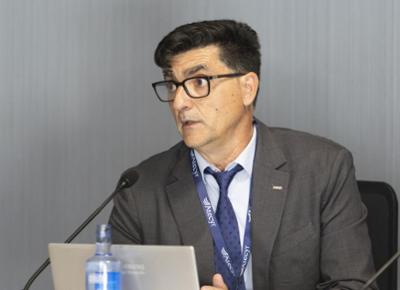

Pedro Vicente Quiles (Atecyr and Rehva): C&R 2025 set to be a real accelerator of technology transition
At a time of transformation like this, marked by decarbonisation, indoor health and digitalisation, C&R 2025, to be held at IFEMA MADRID from 18 to 20 November, "becomes a real accelerator of technological transition." They're the words of Pedro Vicente Quiles, professor at the Universidad Miguel Hernández de Elche, Chair of the Technical Committee of the Spanish Technical Association of Air Conditioning and Refrigeration (ATECYR) and Vice-President of the European Federation of Heating and Air Conditioning Associations (REHVA). He spoke with us to explain the importance of air conditioning in today's society, and the trends and developments in the sector.
How important is air conditioning in today's society?
Today, air conditioning is an essential element for people's health, well-being and productivity. Air conditioning must ensure indoor air quality, a factor that directly influences people's health. Thermal comfort is not a luxury, but a necessity in buildings such as hospitals, offices, schools and retirement homes. Thermal discomfort and lack of ventilation affects people's health and it's an issue when we talk about the prevention of occupational risks, deaths from heat stroke or linked to high temperatures, the spread of respiratory diseases and energy poverty.
What are the main areas of activity and niche markets for air conditioning?
The niche markets remain the classic ones, such as the residential sector, which increases with heat waves. Cooling demands are increasing in buildings like education centres and retirement homes. There is increasing demand for clean rooms and equipment cooling applications, with data centre demand on the rise.
What are the latest trends in the sector?
The main one is decarbonisation. Electrification by switching from boilers to heat pumps is the key technology in the shift towards zero emission systems, along with hybridisation with renewables, energy storage and integration with smart grids.
The second one is improvements in Indoor Environmental Quality (IAQ/IEQ): there is an increasing demand to ensure healthy air, thermal, acoustic and lighting comfort. Real-time monitoring and the use of smart sensors is increasingly used and will be a requirement when the Energy Performance of Buildings Directive is transposed.
The third trend is the use of low Global Warming Potential (GWP) refrigerants, driven by the F-Gas Regulation in the European Union. Replacement of HFC refrigerants, such as R-410A, with refrigerants that have a lower environmental impact but some toxicity or flammability.
And the fourth trend I’d highlight is digitisation. Automation, intelligent control and continuous commissioning make it possible to adjust consumption and improve the user experience.
What regulatory developments will affect the market?
We are awaiting regulatory changes, which will come to us from 2026 on. The Energy Performance of Buildings Directive (EPBD 2024) will set the roadmap for energy retrofitting and will require the integration of indoor environmental quality parameters. The future RITE 2026 will incorporate these European requirements, harmonising them with the Spanish framework. The implementation of UNE-EN 16798 will bring new technical criteria for ventilation and IAQ (indoor air quality). This is in addition to the definition of zero-emission buildings together with the new Energy Building Certification.
In your opinion, how important is the C&R trade fair in boosting the air-conditioning industry?
C&R is the flagship event for our sector in Spain. It's an event so many of us circle on our calendar every two years and one we can't miss. It is a space where technological innovations and trends are showcased. At the last fair, I was very struck by the number of R290 units present, when at the previous fair they were practically non-existent. Technology is changing faster than we realise, and C&R appreciates it.
C&R is also a meeting point for manufacturers, installers, maintainers, designers and administrations. Seeing people face-to-face is important and very necessary when so much of our contact is by telephone, email or videoconference.
At a time of transformation, marked by decarbonisation, indoor health and digitalisation, C&R is becoming a real accelerator of technological transition.
What current issues in the sector do you find most interesting?
The importance of knowing the challenges we face in the sector and how C&R 25 Fair is responding. From Atecyr, we have contributed to the themes; it's so important to align debate with the regulatory and technological reality.
The main proposals include Indoor Air Quality (IAQ): updating regulations (EPBD 2024, RITE 2026, CTE), ventilation, filtration, monitoring and design and operation strategies that guarantee comfort and health in different types of buildings. Thermal decarbonisation: orderly and feasible transition with hybrid solutions, demand flexibility, integration of renewables and centralised heat pumps, together with the roadmap towards Zero Emission Buildings (ZEB).
And then there's advanced operation and maintenance: commissioning as an essential tool to ensure energy efficiency, comfort and sustainability throughout the life cycle of the building. And other cross-cutting challenges: efficient and safe refrigeration with natural refrigerants, health prevention against Legionella, digitalisation and smart control using AI, training and talent recruitment, simplification of installations, and life cycle and carbon footprint analysis as part of the new regulation.
With this, we aim to bring to the Fair a rigorous, up-to-date and useful programme for professionals, administration and society, reinforcing the role of Atecyr as a technical reference.





